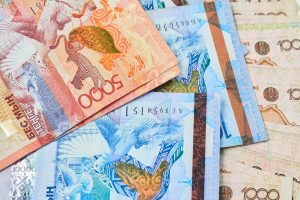This week, Kazakhstan’s President Kassym-Jomart Tokayev shuffled his government. Besides new Prime Minister Olzhas Bektenov, notable new appointments included Finance Minister Madi Takiyev, and National Economy Minister Nurlan Baybazarov. The fresh faces in the economic bloc come as Tokayev pledges to pursue a new economic course, including promises to reduce the state’s outsized role in the economy, boost local production, and create a more efficient, market-led environment.
Tokayev’s economic reform agenda has already begun to take shape this year with a string of new policies rolled out in recent months, including plans to lift state subsidies on gas, utilities, and some food products, develop new infrastructure, and introduce a new, more efficient Tax Code. This month, Kazakhstan’s national airline, Air Astana, is also set to list on the London Stock Exchange, ending an almost decade-long “will it, won’t it” tale since the government first mooted floating its flagship carrier in 2016.
Astana’s motivation to reform the economy is clear. Last year, bulging state spending and a lower-than-expected tax take meant Kazakhstan registered a budget deficit of $6.2 billion, or 3.7 percent of GDP, on par with the deficit reported in 2020 at the height of COVID-19 pandemic. While the economy has expanded in recent years, performance has been lackluster compared to the heady growth days of the early 2000s. Once a darling of foreign oil and gas investors, Kazakhstan has long since failed to get any major new projects off the ground. Last year, the long-awaited expansion of the Tengiz oil field, the Tengiz Future Growth Project, was delayed again, prompting the IMF to downgrade its forecast for Kazakh GDP growth in 2024 from 4.2 to 3.1 percent.
In many ways, the failures of Tokayev’s administration to get the economy moving in recent years can be put down to unfavorable political circumstances. The dust of the widespread protests that rocked Kazakhstan in January 2022 is only just beginning to settle, and Tokayev has been busy overseeing a lustration of sorts, pushing out loyalists of former President Nursultan Nazarbayev in favor of a new political and economic elite. Moreover, Russia’s war in Ukraine has presented a serious threat to Kazakhstan’s economic stability. Roughly 80 percent of Kazakh crude exports pass through Russian territory via the Caspian Pipeline Consortium (CPC) – which, already interrupted on dubious political grounds in 2022, has its terminal just west of Russia’s Novorossiysk port, unnervingly close to Ukrainian forays against Russian warships in the area in recent months.
Nevertheless, with the domestic political tensions that followed the January 2022 protests largely subsiding and the understanding that the war between Russia and Ukraine is here to stay, Tokayev appears to be refocusing his attention on economic reform. Tokayev’s State of the Nation address in September last year was devoted solely to economic policy and laid out prudent measures to decrease the state’s share in the economy and boost growth. These included convincing banks to lend more to the private sector, streamlining ministries, and maximizing Kazakhstan’s potential in promising sectors, such as renewables.
All of these are broadly sensible policies; the proof will be in the pudding. None of the measures set out by Tokayev are new, and Kazakhstan has often tried and failed to implement them in the past. Kazakhstan’s failure to stay the course is often due to the adverse short-term consequences that such reforms entail. Lifting subsidies increases living costs for the population, and reducing the state’s share in the economy pushes up unemployment – factors that foster public dissatisfaction and prompt the government to backtrack on reforms. For example, it was the state’s efforts to lift price caps on LPG that provided the catalyst for the January 2022 protests in the first place – price controls that were quickly reinstated as the unrest grew.
As the immediate fallout of the domestic and geopolitical turbulence of the last two years abates, the Tokayev administration is finally able to move out of crisis management mode and return to its economic agenda. While the direction of travel is positive, the real challenge will be seeing the reforms through. A tight socioeconomic climate and risk of public protest could easily see the government backtrack and much-needed reforms fall by the wayside.

































